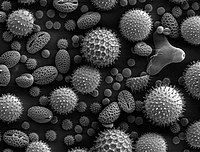
Photo from wikipedia
Abstract Gas-involved sintering of supported nanoparticles is a common process of catalysts deactivation, but the mechanism is still ambiguous. Herein, we investigated the sintering behaviors of a Au-TiO2-(1 0 1) model catalyst… Click to show full abstract
Abstract Gas-involved sintering of supported nanoparticles is a common process of catalysts deactivation, but the mechanism is still ambiguous. Herein, we investigated the sintering behaviors of a Au-TiO2-(1 0 1) model catalyst in different gas environments via in situ environmental transmission electron microscopy (ETEM), spherical aberration (Cs-) corrected scanning transmission electron microscopy (STEM) and ex situ annealing experiments. Distinct sintering behaviors of Au-TiO2 catalysts were observed in ETEM that O2 or O2/CO mixed atmospheres facilitated but CO inhibited the sintering process. Ex situ annealing experiments were in accordance with in situ results. Further study with Cs-corrected STEM showed that TiO2 support annealed in CO got rougher and more defective than that annealed in O2, which suppressed the free movement of Au particles on TiO2 surface.
Journal Title: Journal of Catalysis
Year Published: 2020
Link to full text (if available)
Share on Social Media: Sign Up to like & get
recommendations!